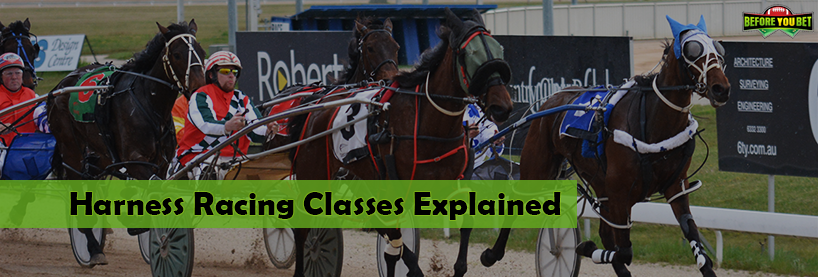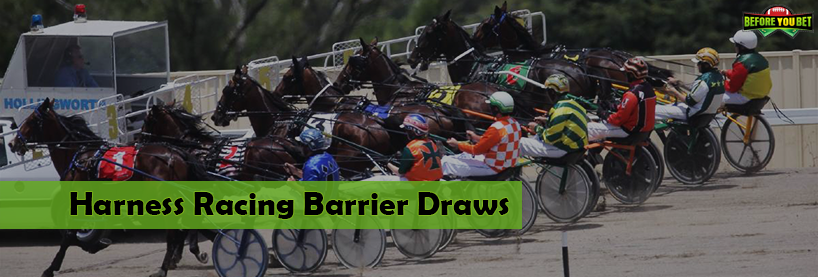Harness racing form can be daunting to punters that are new to the sport and form analysis for the trots is certainly different to that of the gallops or greyhounds. We've listed what we think the most important factors to consider are when studying the form for a trots race.
Studying Harness Racing form: what are the most important things to consider?
Here are the main form aspects that you should consider when studying harness racing form:
Assess the race conditions
The first thing that you want to do when studying a race is to get a snapshot of the upcoming event. The class of race is a very good starting point, as is the actual distance of the race. A maiden race, sometimes shown as an R0-class event, is for horses that have never won a race, and it is a much-lower level than the top echelon which will be M0+ or FFA racing. There are also Group 1 races for open-class or age-restricted horses such as 2YO and 3YOs. Another key factor to look at when initially looking at a race is what track they are racing at, and does the venue have a sprint lane.
Read our article explaining the different classes of harness racing in Australia here!

Speed maps
Most punters have heard the term speed maps applied to all three racing codes, but it is significantly more important for harness racing compared to thoroughbred racing. Position-in-running goes a long way to determining the main contenders in a race. Horses leading or close to the lead, are generally better off than their rivals, with backmarkers often facing a tough task of trying to win the race.
A good starting point is to try and work out three key positions in running. They are:
- Leader
- Breeze
- Behind Leader
Trying to map the leader is a great starting point because they win around 40-45% of all harness races. It is a huge advantage to be in front and you will see a lot of favourites (or second favourites) find the lead in harness races. Next, I would try and work out the breeze, or death seat, horse. Some horses will be driven in a consistent manner and they will often race outside of the leader, leading up the moving line (or one-wide line). A strong breeze horse will dictate the pace of the race, because they can either apply pressure to the leader to ensure a strong tempo, or back-off and let the leader go slow in a bid to outsprint them late. Finally, looking to map the horse behind the leader is important because they will get a chance to run the leader down via the sprint lane if the track has one.
You can attempt to do a speed map for every horse, but you can save time by mapping the three positions mentioned above and possibly the 1 out 1 back position, 3 back on the pegs and the horses(s) likely to be in the three-wide line in the final lap of the race. It really is up to you.
Read our article on the importance of barrier draws in harness racing here!

Recent form
This aspect could be completed before working out a speed map, but it makes sense to work out where the horses will be first and then try and assess whether they are good enough to win this specific race. Because harness racing is largely dependent upon barrier draws and speed maps, you can’t completely rule out a horse that hasn’t placed recently. There are plenty of horses in harness racing that race best when leading or trailing the leader. Several runs where they don’t have the opportunity to do so could see them finishing down the track. If we have completed our speed map, or the main positions, then we can assess the horse and see if we think he or she is good enough to win from the likely position in running.
The old adage “winning form is good form” can be true but you need to delve a little deeper. A horse that has won a maiden, and a couple of lower-class level races may look good on paper due to their numerical form, but if they are sharply up in grade (class), then they may not be a realistic winning contender.
Looking for horses dropping in class can be something to look for, as these horses will have a stronger chance of winning when they meet easier opposition than they have been racing. A good 3YO (or even a 2YO) can easily dismantle older horses in lower-class races. For example, a top 3YO horse will often prove way too good in a C1 race – and their odds will often reflect that.
Assessing sectional times is very important in harness racing and this can often be used to identify horses that will struggle in a race. Most of the time, a good horse can go fast or slow, but a slow horse cannot go fast. Every horse has their limit, and some simply won’t break say a 1:58 mile rate, while a very good horse could dictate a race by leading and running slow time, with the end result being a 2:00 mile rate for example. Looking at last half (800m) times and even individual quarters is crucial because you may see a horse fly home, but then look at the sectional for that quarter and realise they ran home in a slow 31 seconds which makes the run look better than it was.
Distance of race
In thoroughbred racing, the distance is extremely important because sprinters won’t race over 2000m for example and stayers won’t race over 1200m, unless they are resuming from a spell and just going around to build some fitness. Harness racing is very different as the standardbred is a lot more durable and capable of racing over distances between 1609m to 3200m. It is not uncommon to see a horse race over 2536m one week and drop back to 1730m the next, or vice versa.
With that in mind, a lot of horses in harness racing are capable of racing over varying distances. That doesn’t mean that some horses don’t excel over a distance and there are definitely examples where a horse will race well over 1609m but when they step up to 2300m, they may not race as well because the distance tests them. Like the gallops, some horses in the trots will be stayers and their best work may come over 2536m as opposed to 1730m.
The best advice we can give on distance, is to treat each horse individually and look at past form to determine if a horse excels over a shorter, longer, or any distance. The class of race should be considered when assessing if a horse is good or poor over a distance, because running 8th in a metro race over a long distance is likely to be better form than when the horse won a restricted race over a sprint distance.
Trainer and driver
Both are important factors when studying the form. Following leading stables can be a good start because they are winning the most races overall. A big part of that is due to those stables engaging the best drivers. We personally think the driver is a more important factor to consider because good and bad drives can be the difference between winning and losing. There is a big difference between having Chris Alford driving compared to someone that only has a handful of drives each month or year. Elite drivers can get the best out of horses because they will know the form better than average drivers and will drive each horse to their ability.
Finding a key driver or even trainer change can go a long way to finding the winner of a race, because horses can improve significantly if they were previously trained by a hobby trainer and then find themselves in the stable of a regular top trainer. Both factors should be assessed when analysing form for a race.
Other things to consider
A few other factors to consider when assessing a horse’s chance in a race:
- Sprint lane or no sprint lane: this will mainly apply to leader or behind leader horses. A horse that is leading will have to worry about the horse behind if there is a sprint lane because they are guaranteed a shot at the leader, assuming the leader gets them to the sprint lane. If there isn’t a sprint lane, then the horse behind the leader could be held up to the line and not have any clear running.
- Gear changes: quite often you will see “hood type blinkers” on for a horse that has drawn well and will be driven aggressively to try and lead. Different gear changes can often tell a story about how a horse will be driven.
- Race replays: watching the actual races and then reviewing previous runs is extremely important. If you see a horse was held up, it is worthwhile going back to check the tape to see just how unlucky the horse was, and whether you think it would have run home strongly.
- Forgive a run: horses are not machines and just like sporting teams or athletes, they can put in a bad performance. Sometimes there will be an excuse such as the horse pulling up lame. Or the horse may break gait and gallop. If a horse has excellent form and then puts in a bad run, it doesn’t mean that you should immediately jump ship next start.
- Read Stewards’ Reports: in order to work out whether a horse had an excuse is by reading the Stewards’ Report. Any injuries sustained will be included in the report and other items such as suffering a flat tyre, bleeding from a nostril(s) will be also appear here.
- Trial form: Watching trial vision, if available, and checking trial form is very important for horses ready to make their racetrack debuts or resuming from a spell. It can be a good guide but sometimes it will need to be taken with a grain of salt as drivers won’t always push the horse around.



